MENU
The Electronic Scholarly Publishing Project: Providing access to classic scientific papers and other scholarly materials, since 1993. More About: ESP | OUR CONTENT | THIS WEBSITE | WHAT'S NEW | WHAT'S HOT
Comparative Timelines
The ESP Timeline (one of the site's most popular features) has been completely updated to allow the user to select (using the timeline controls above each column) different topics for the left and right sides of the display.
Select:
New Left Column
New Left Column
Dates
Decade
New Right Column
New Right Column
5200 computers installed in Britain
Computer terminals in homes predicted for 1980
DEC introduces the PDP-8/E
IBM 370/145 introduced
Open University to install ICL 32K 1902A computer
Univac 1110 is introduced
UNIX is developed
Xerox opens the Palo Alto Research Center (PARC)
1970
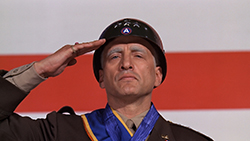 Patton wins Academy Award for best picture. The film, written by Francis Coppola and Edmund H. North, was directed by Franklin J. Schaffner. Arriving in the heat of the Vietnam war, some people claimed Patton was hawkish, while others said it was anti-war. George C. Scott gave a powerhouse performance and won as best actor, even after announcing he wouldn t accept it because he didn t believe actors should be in competition.
Patton wins Academy Award for best picture. The film, written by Francis Coppola and Edmund H. North, was directed by Franklin J. Schaffner. Arriving in the heat of the Vietnam war, some people claimed Patton was hawkish, while others said it was anti-war. George C. Scott gave a powerhouse performance and won as best actor, even after announcing he wouldn t accept it because he didn t believe actors should be in competition.
Burroughs introduces L500 Visible Record Model
DEC launches Giant Mini PDP-11/45
DEC launches PDP-11/03
Decsystem 10 introduced
First Network Email sent by Ray Tomlinson
IBM's Thomas J Watson retires
Intel Introduces the World's First EPROM
Intel Launches the First Microprocessor - The 4004
Nixdorf merge with AEG-Telefunken
Olivetti launches P602 "minicomputer"
1971
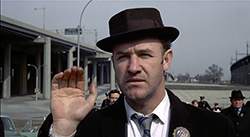 The French Connection wins Academy Award for best picture. This action-drama was one of Oscar's many fact-based wins, based on the actions of N.Y. drug cop Popeye Doyle (played by winner Gene Hackman). The film (directed by William Friedkin and edited by Gerald B. Greenberg) featured a chase sequence that is still held up as an example of great filmmaking.
The French Connection wins Academy Award for best picture. This action-drama was one of Oscar's many fact-based wins, based on the actions of N.Y. drug cop Popeye Doyle (played by winner Gene Hackman). The film (directed by William Friedkin and edited by Gerald B. Greenberg) featured a chase sequence that is still held up as an example of great filmmaking.
£1.3m RAF order for Cossor Terminals
370/125 and OCR reader from IBM
ARPA Network - UK gets link to major US network
ASC developed by Texas Instruments
Atanasoff Official "Inventor" of Computer
Atari Introduces Pong
Burroughs Launch L8000 Range of Computers
Burroughs launches L7000 range on UK market
C programming language developed
Clive Sinclair introduces the first pocket calculator
Development of standard OS to be halted
First e-mail program developed
First Infra-red Data Link transmission in the UK
Flat screen terminal introduced by Burroughs
Foundation of Cray Research Inc by Seymour Cray
Fujitsu and Hitachi in joint deal
GE Time Sharing Service
Hewlett-Packard introduces the HP-35
Honeywell's 700 range comes to the UK
IBM's DOS/VS
NCR 399
Problems with IBM 370/155 and 370/165
Sigma 6
SITA Network
Space Craft Pioneer 10 & 11 use Custom CPU in TTL
Terminal range boosted by Burroughs TC 3500
The Future of ICL as a British-controlled going concern
The Intel 8008 was introduced
The Magnavox Odyssey, the first video game console, is released
UK launch for Burroughs L8000 range
Worlds first IBM 370/135 installed in Britain
Integrated Photomatrix (Noble) demonstrates for 64 by 64 MOS active pixel array
1972
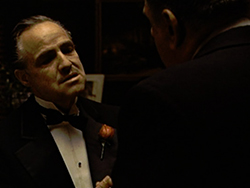 The Godfather wins Academy Award for best picture. Mario Puzo's novel was a big hit, and the Francis Coppola-directed film was too. It hit a milestone by passing $100 million at the U.S. box office. And Oscar history was made when the best-picture winner's tally (three Oscars) was outnumbered by another film ( Cabaret, with eight wins).
The Godfather wins Academy Award for best picture. Mario Puzo's novel was a big hit, and the Francis Coppola-directed film was too. It hit a milestone by passing $100 million at the U.S. box office. And Oscar history was made when the best-picture winner's tally (three Oscars) was outnumbered by another film ( Cabaret, with eight wins).
8" floppy & first "Hard Drive introduced by IBM
Bob Metcalfe invents Ethernet
Britain exports more computing equipment than it imports
Gary Kildall writes CP/M
IBM 370/145 product range released
IBM in Nigeria
IMSAI is founded. In 1973
The Micral was the earliest commercial, non-kit personal computer
Xerox Alto personal computer was developed at Xerox PARC
Fairchild Semiconductor releases the first large image forming CCD chip: 100 rows and 100 columns of pixels.
1973
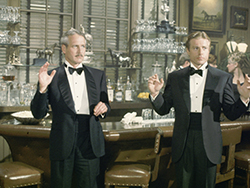 The Sting wins Academy Award for best picture. The caper movie, starring Paul Newman and Robert Redford, marked the first time a woman won a best picture Oscar: the film's producers were Tony Bill, Michael Phillips, and Julia Phillips.
The Sting wins Academy Award for best picture. The caper movie, starring Paul Newman and Robert Redford, marked the first time a woman won a best picture Oscar: the film's producers were Tony Bill, Michael Phillips, and Julia Phillips.
GA LSI 12/16 and LSI16
introduction of Intel 8080 2MHz microprocessor
MITS completes the first prototype Altair 8800 microcomputer
NCR 250-6000
Philips P852M
The Z-80, 8 bit processor is designed by Zilog Corp
Xerox Palo Alto Research Center designed the Alto
1974
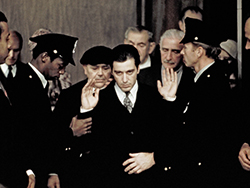 The Godfather Part II wins Academy Award for best picture. The Francis Coppola movie was the first time a sequel won the top prize. It started decades of Part 2 movies, though the tale of the Corleones had a unique structure: It was both a continuation of the first film and an origins story, flashing back to before the original's start.
The Godfather Part II wins Academy Award for best picture. The Francis Coppola movie was the first time a sequel won the top prize. It started decades of Part 2 movies, though the tale of the Corleones had a unique structure: It was both a continuation of the first film and an origins story, flashing back to before the original's start.
Bill Gates and Paul Allen sign a licensing agreement with MITS
CP/M operating system finished
Cray 1A announced
First meeting of the Homebrew Club
Microsoft Founded
MITS Altair launched on the cover of Popular Electronics magazine
Bryce Bayer of Kodak develops the Bayer filter mosaic pattern for CCD color image sensors.
1975
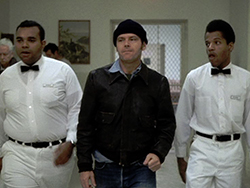 One Flew over the Cuckoo's Nest wins Academy Award for best picture. This was only the second film to take the top five prizes: Best picture, director, screenplay, actor and actress.
One Flew over the Cuckoo's Nest wins Academy Award for best picture. This was only the second film to take the top five prizes: Best picture, director, screenplay, actor and actress.
Apple 1 Released
Burroughs introduce the large B7700 series
Dec System 20 introduced
Intel introduce SBC-80/10 "computer on a card"
Last slide rule manufactured today
Seymour Cray demonstrates CRAY-1 - The first vector-processor supercomputer
Steve Wozniak, Steve Jobs and Ronald Wayne Found Apple Computer Inc.
The 5 1/4" flexible disk drive was introduced
Steadicam becomes available.
1976
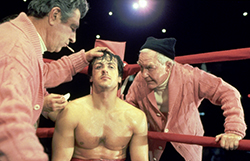 Rocky wins Academy Award for best picture. There were plenty of great films that year, including All the President's Men and Network, but the Academy voters fell in love with this tale of a likable loser who works hard for his big chance. It started a slew of Rocky sequels.
Rocky wins Academy Award for best picture. There were plenty of great films that year, including All the President's Men and Network, but the Academy voters fell in love with this tale of a likable loser who works hard for his big chance. It started a slew of Rocky sequels.
Commodore International shows its Commodore PET 2001
Radio Shack announces TRS-80 computer
Science of Cambridge Ltd Formed
The Apple II launched
The MK14 was introduced by Science of Cambridge
The RCA CDP1802 microprocessor was used in the Galileo spacecraft
1977
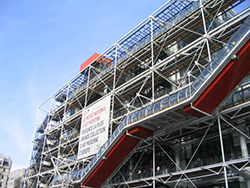 Centre Georges Pompidou, commonly shortened to Centre Pompidou and also known as the Pompidou Centre in English, opens in 1977. It is a complex building in the Beaubourg area of the 4th arrondissement of Paris, near Les Halles, rue Montorgueil, and the Marais. It was designed in the style of high-tech architecture by the architectural team of Richard Rogers and Renzo Piano, along with Gianfranco Franchini. It houses the Bibliothèque publique d'information (Public Information Library), a vast public library; the Musée National d'Art Moderne, which is the largest museum for modern art in Europe; and IRCAM, a centre for music and acoustic research. It is named after Georges Pompidou, the President of France from 1969 to 1974 who commissioned the building.
Centre Georges Pompidou, commonly shortened to Centre Pompidou and also known as the Pompidou Centre in English, opens in 1977. It is a complex building in the Beaubourg area of the 4th arrondissement of Paris, near Les Halles, rue Montorgueil, and the Marais. It was designed in the style of high-tech architecture by the architectural team of Richard Rogers and Renzo Piano, along with Gianfranco Franchini. It houses the Bibliothèque publique d'information (Public Information Library), a vast public library; the Musée National d'Art Moderne, which is the largest museum for modern art in Europe; and IRCAM, a centre for music and acoustic research. It is named after Georges Pompidou, the President of France from 1969 to 1974 who commissioned the building.
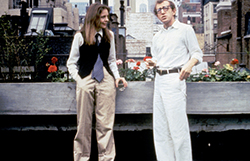 Annie Hall wins Academy Award for best picture. The year's biggest box office hit, Star Wars, was nominated as best pic, but lost out to Woody Allen's comedy-romance, which also earned trophies for screenplay, director, and actress.
Annie Hall wins Academy Award for best picture. The year's biggest box office hit, Star Wars, was nominated as best pic, but lost out to Woody Allen's comedy-romance, which also earned trophies for screenplay, director, and actress.
Acorn Computers Ltd formed in Cambridge, UK
Texas Instruments introduced Speak & Spell
VisiCalc Spreadsheet is born
1978
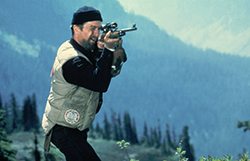 The Deer Hunter wins Academy Award for best picture. During the Vietnam war, Hollywood avoided movies about the conflict, but Michael Cimino's epic was one of the first major-studio releases to tackle the subject. It remains a controversial movie, but Cimino's directing skills are unquestionable.
The Deer Hunter wins Academy Award for best picture. During the Vietnam war, Hollywood avoided movies about the conflict, but Michael Cimino's epic was one of the first major-studio releases to tackle the subject. It remains a controversial movie, but Cimino's directing skills are unquestionable.
"VisiCalc" introduced
Acorn System 1 Launched
Apple II+ Launched
Microsoft moves from Albuquerque, New Mexico to Bellevue, Washington
1979
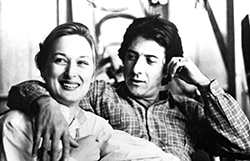 Kramer vs. Kramer wins Academy Award for best picture. The intimate drama about the ravages of divorce and child custody earned honors for adapted screenplay, director (both Robert Benton), actor (Dustin Hoffman), and supporting actress (Meryl Streep).
Kramer vs. Kramer wins Academy Award for best picture. The intimate drama about the ravages of divorce and child custody earned honors for adapted screenplay, director (both Robert Benton), actor (Dustin Hoffman), and supporting actress (Meryl Streep).
ESP Quick Facts
ESP Origins
In the early 1990's, Robert Robbins was a faculty member at Johns Hopkins, where he directed the informatics core of GDB — the human gene-mapping database of the international human genome project. To share papers with colleagues around the world, he set up a small paper-sharing section on his personal web page. This small project evolved into The Electronic Scholarly Publishing Project.
ESP Support
In 1995, Robbins became the VP/IT of the Fred Hutchinson Cancer Research Center in Seattle, WA. Soon after arriving in Seattle, Robbins secured funding, through the ELSI component of the US Human Genome Project, to create the original ESP.ORG web site, with the formal goal of providing free, world-wide access to the literature of classical genetics.
ESP Rationale
Although the methods of molecular biology can seem almost magical to the uninitiated, the original techniques of classical genetics are readily appreciated by one and all: cross individuals that differ in some inherited trait, collect all of the progeny, score their attributes, and propose mechanisms to explain the patterns of inheritance observed.
ESP Goal
In reading the early works of classical genetics, one is drawn, almost inexorably, into ever more complex models, until molecular explanations begin to seem both necessary and natural. At that point, the tools for understanding genome research are at hand. Assisting readers reach this point was the original goal of The Electronic Scholarly Publishing Project.
ESP Usage
Usage of the site grew rapidly and has remained high. Faculty began to use the site for their assigned readings. Other on-line publishers, ranging from The New York Times to Nature referenced ESP materials in their own publications. Nobel laureates (e.g., Joshua Lederberg) regularly used the site and even wrote to suggest changes and improvements.
ESP Content
When the site began, no journals were making their early content available in digital format. As a result, ESP was obliged to digitize classic literature before it could be made available. For many important papers — such as Mendel's original paper or the first genetic map — ESP had to produce entirely new typeset versions of the works, if they were to be available in a high-quality format.
ESP Help
Early support from the DOE component of the Human Genome Project was critically important for getting the ESP project on a firm foundation. Since that funding ended (nearly 20 years ago), the project has been operated as a purely volunteer effort. Anyone wishing to assist in these efforts should send an email to Robbins.
ESP Plans
With the development of methods for adding typeset side notes to PDF files, the ESP project now plans to add annotated versions of some classical papers to its holdings. We also plan to add new reference and pedagogical material. We have already started providing regularly updated, comprehensive bibliographies to the ESP.ORG site.
ESP Picks from Around the Web (updated 06 MAR 2017 )
Old Science

Weird Science

Treating Disease with Fecal Transplantation
Fossils of miniature humans (hobbits) discovered in Indonesia

Dinosaur tail, complete with feathers, found preserved in amber.
Astronomy

Mysterious fast radio burst (FRB) detected in the distant universe.